Measure Marketing Success: 8 Key Performance Indicators (KPIs)
Digital marketing is a very sophisticated venture. It drives not only sales but the growth and development of a company by identifying new, profitable opportunities in the market. There are several moving parts and things that directly or indirectly contribute to the company’s revenue.
While marketing allows for so many opportunities to make gains, its operations are spread all over the place. There are multiple channels, multiple campaigns, and keeping track of all of it gets difficult.
Moreover, it even gets difficult to say which marketing activity is adding to the revenue gains and which activity is just dead weight. These complexities make measuring the success of your marketing efforts quite difficult.
Defining Marketing Success
The definition of marketing success highly depends upon what definition you have for marketing.
If for you, marketing is a process to generate brand and product awareness, then a rise in web traffic, likes, views, shares, and comments will be defined as marketing success. If for you, marketing is a process to acquire customers, your sign ups and conversion rates are going to matter more.

Every business owner and marketer will have a distinct understanding of marketing and thus, have different definitions to it. But what we know for sure is that everyone wants their marketing to result in more sales and decreasing expenditure in the long run.
So considering all the variations in the definition of marketing and different marketing philosophies, we can at least agree on the following definition of marketing success.
Marketing efforts that enhance brand and product perceptions that result in growing sales, profits and eventually the market share can be defined as marketing success.
The above definition will definitely sit well with all. But as one question is answered, it raises a new question.
The question here is, how to track marketing success?
While there are many key performance indicators for marketing, they only track and showcase the effectiveness of marketing efforts.
There isn’t a direct way to know how one marketing activity resulted in increased sales and revenue generation.
However, this doesn’t make KPIs completely incapable of measuring the impact of marketing on revenue.
Key performance indicators can be distinguished into two types, functional metrics, and vanity metrics. But before we learn those, let us first understand what KPIs are.
Key Performance Indicators to Measure Marketing Success
A key performance indicator is a quantifiable measure of performance over a specific time frame for a certain operational business objective.
KPIs act as targets that can be achieved by improving the various functions of a business.
For example, the visitor-to-lead conversion rate tracks what percent of the visitors to your website were converted into leads.
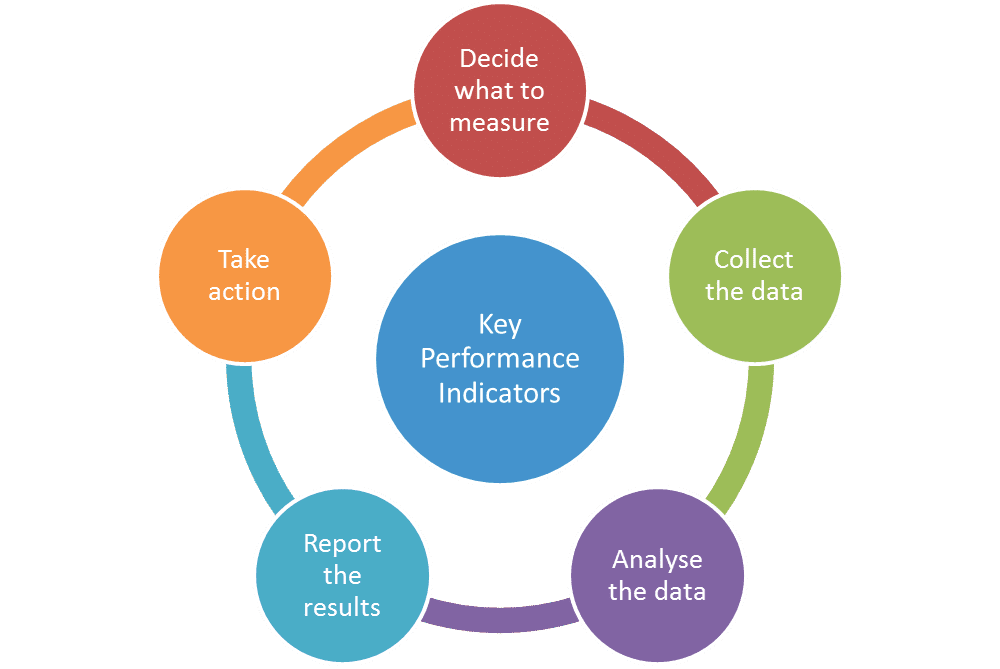
Image Source: flock-associates.com
This KPI highlights how effective your landing page design and the content therein are when it comes to converting visitors into leads. You can track and measure the visitor-to-lead conversion rate for a while and target to double it using better designed and more appealing landing pages.
So, you can have KPIs that are functional as the one mentioned above, then there are those known as vanity metrics. Vanity KPIs are not functional, as in, they do not track the success of marketing efforts on sales, revenue generation, or profits.
Vanity KPIs are good for measuring specific performances of marketing activities i.e. the growth of the number of followers on Instagram or Twitter, the number of website views, the number of newsletter subscribers, etc.
While an observed increase in these KPIs is viewed to be positive, it rarely does translate directly into revenue growth for the business.
Using this knowledge, you can now design a functional and objective framework for measuring marketing success.
How To Design A Framework That Accurately Measures Marketing Success
The objective here is to connect the dots between the various marketing activities and the resulting outcomes for the business in terms of revenue, profit, and market share growth.
For this purpose, we suggest you pick a mix of KPIs. Some of those need to be functional, i.e. aid the process of decision making and calibrating marketing strategy.
The rest of the KPIs should be ones measuring direct outcomes of marketing operations, in terms of some form of revenue growth or inflow.
We recommend the following KPIs as they offer a balanced mix of functional and outcome-oriented measures.
Website Traffic Growth
It measures the growth in website traffic compared to the preceding period of measurement.
This KPI is a good indicator of how effective your top of the sales funnel is. Many marketing activities result in growth in website traffic.
So the performance of operations such as brand awareness, outreach, brand, and product recognition can be tracked using this KPI.
More traffic equates to more opportunities to convert visitors into customers. This is the most basic strategy for scaling a business.
Traffic-to-Lead Conversion Rate
It measures what percent of the website traffic actually converts into leads.
Visitors entering your funnel is a good thing but the marketing operations need to ensure that more visitors move down the sales funnel.
This KPI is a measure of how well you are able to provide value to your visitors that in turn builds trust between the two of you. This trust is what will make them reach out to you for the solutions you’re providing in the market.
MQL to SQL Conversion Rate
It measures what percent of the marketing qualified leads convert into sales qualified leads. MQLs are leads that have shown significant interest in your offerings but are not ready to commit.
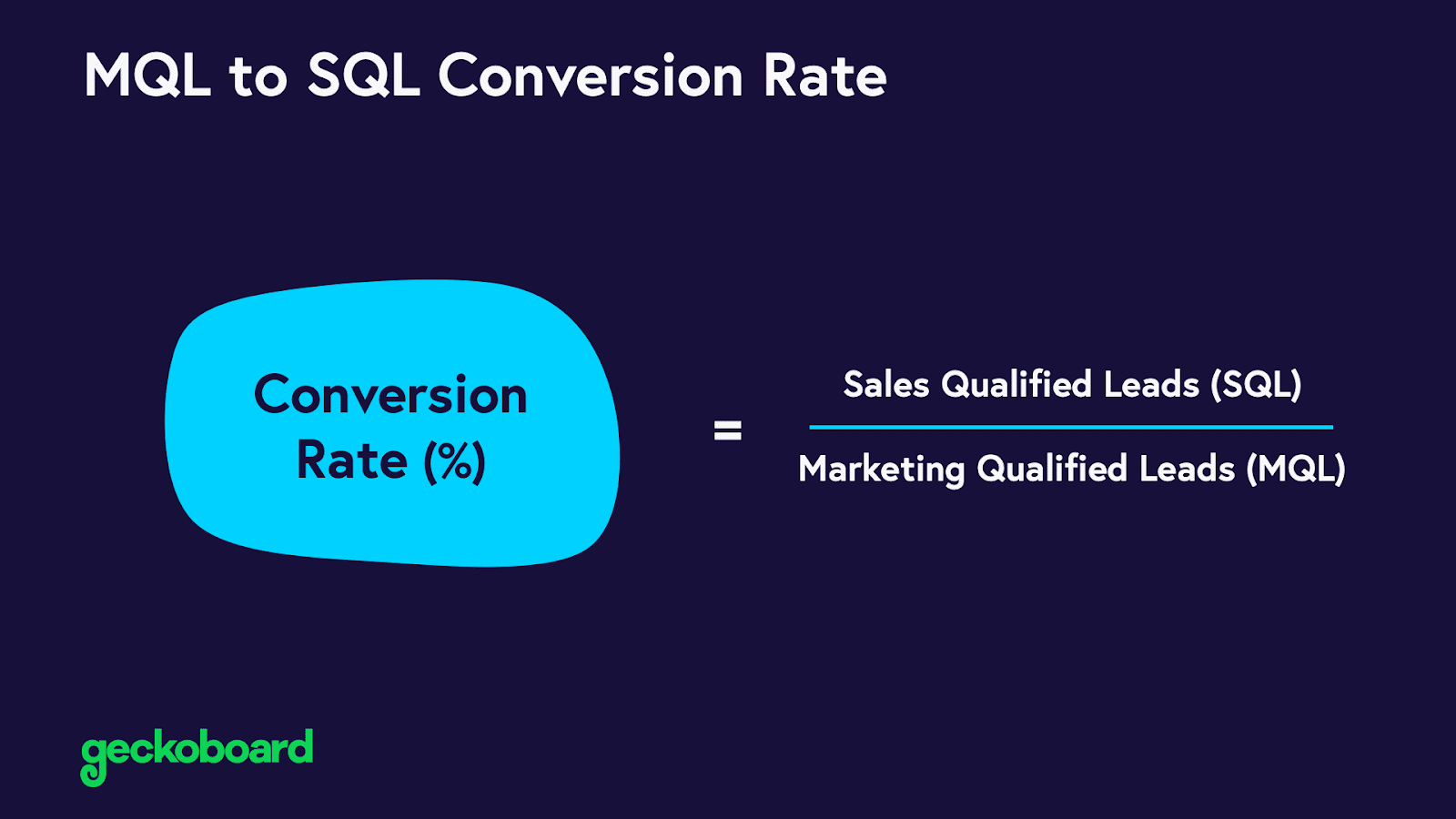
Image Source: geckoboard.com
SQLs are leads that are interested and deemed ready to be followed on by your sales team.
This measure tracks the performance of marketing operations in the middle of the sales funnel.
A higher conversion rate equates to a well-performing marketing operation.
Customer Acquisition Cost
It measures how much money a business spends to acquire every new customer.
You can say that this KPI measures the overall efficiency of all your marketing operations.
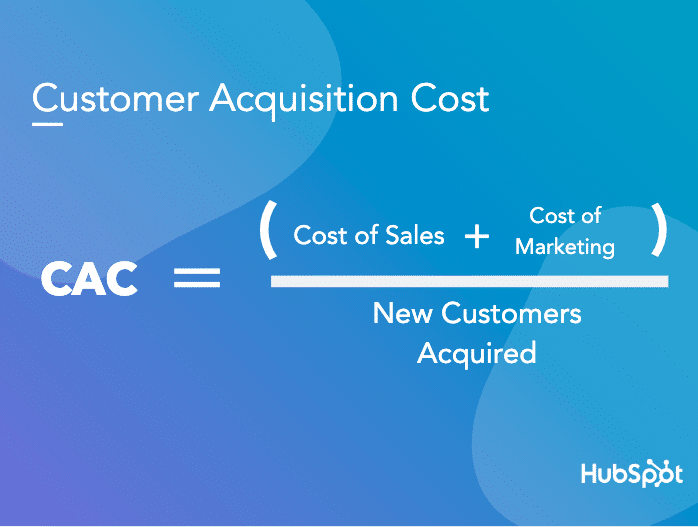
Image Source: hubspot.com
Growing your clientele is seen as a positive for any business as this is how businesses grow.
However, growth should not be too costly and the cost to acquire a new customer should be justified.
You can use this KPI to track and lower the cost of customer acquisition over the long run.
Monthly Recurring Revenue (Outcome)
It measures the amount of revenue a company can expect to generate on a monthly basis.
This revenue is in the form of recurring orders, subscriptions, or a steady inflow of new customers making purchases.
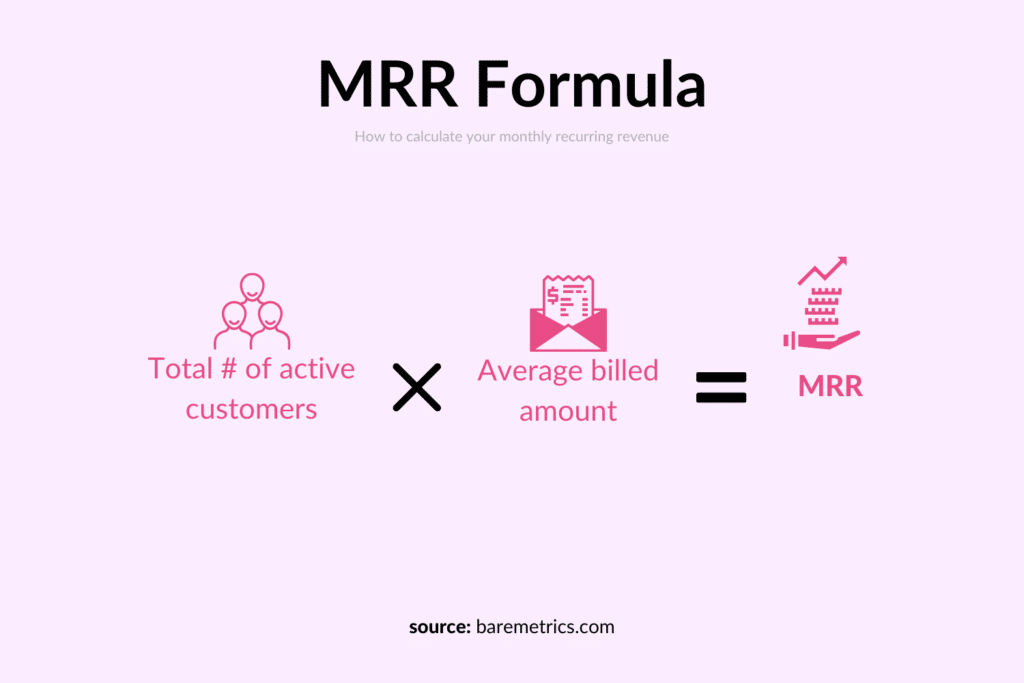
Image Source: baremetrics.com
This KPI is a good measure of how consistent the performance of your marketing operations is.
Recurring orders, subscription renewals, and a steady inflow of new customers show how good the product and marketing mix of a business is.
Return On Marketing Investment (Outcome)
It measures how much returns does a marketing campaign or the operations as a whole generate in terms of sales growth over a period of time. The return on marketing investment not only needs to be positive but positive by a good margin.
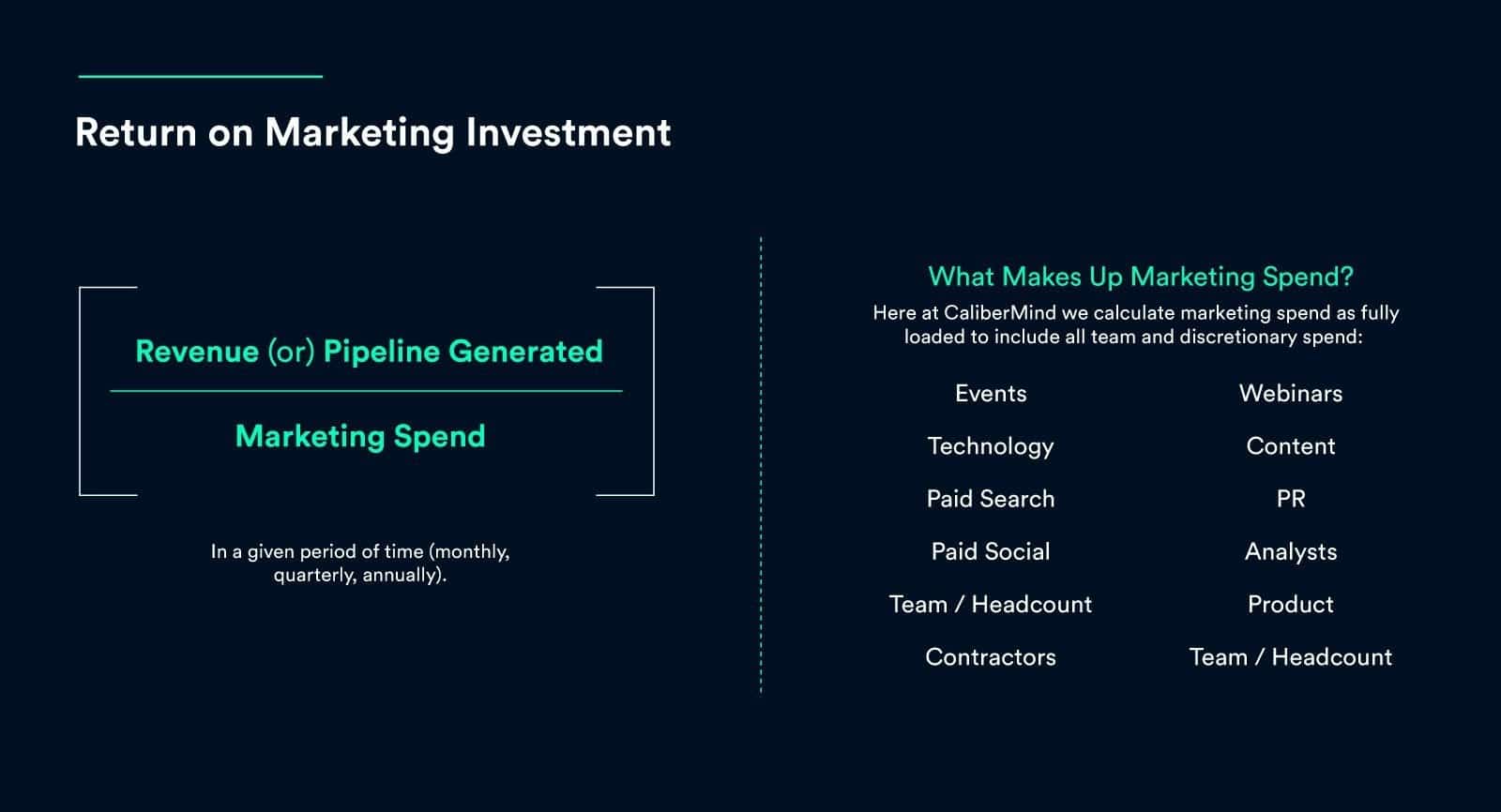
Image Source: calibermind.com
This measure highlights how effective the marketing operations of a firm are. It also makes it easy to track, measure, and control the marketing spend and optimize marketing efforts to yield the best returns.
Average Order Value (Outcome)
It measures the average value of orders over a period of time.
This KPI is especially useful for B2B businesses that sell high ticket items that are tailor-made to suit the clients’ operational requirements.
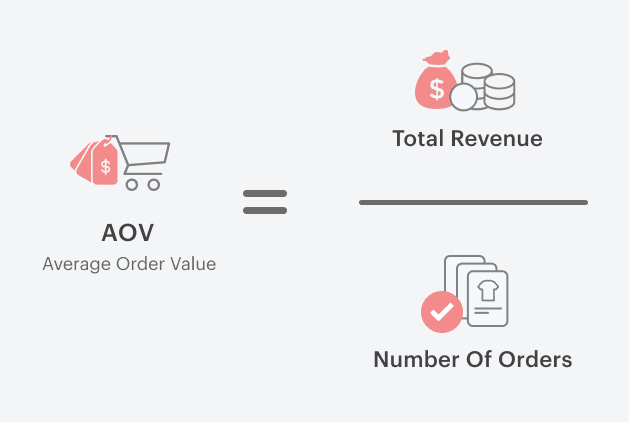
Image Source: eshopbox.com
A growing AOV is an indicator that the marketing operations have been effective at establishing the business as a trusted provider for excellent solutions to its clients.
It is also a good indicator of the growing profit margins of a business.
Revenue Growth (Outcome)
This is the ultimate measure of marketing success. Every marketing effort and the operation as a whole needs to produce revenue growth as the final outcome. This has always been the underlying objective of all marketing operations.
A growing customer base is desirable but a growing revenue is what is the real measure of business growth.
Revenue growth opens up more opportunities for the business as they can invest more into making and producing better products, marketing, etc.
These are our recommendations. You can always mix and match different KPIs ensuring you get a good mix at the end.
Revenue Attribution
The ability to translate marketing performance into revenue-related outcomes should form the core of it. Let’s say you want to optimize the marketing operations of your B2B business further to make more gains and deliver a higher return on investment? What do you do?
The best course of action is marketing and revenue attribution. Revenue attribution helps you connect marketing campaigns and touchpoints to revenue and helps you measure marketing success by connecting your efforts with outcomes. Revenue attribution approaches attribution from the revenue perspective and is focused on measuring success.
Our Final Word
The final outcome of any successful marketing activity should be growth in sales, revenue, and profits. Measuring marketing success is a tedious task but it can be done quite effectively by opting for the right approach. Using a mix of KPIs, functional and outcome-oriented, to track and measure the performance of your marketing activities can help you determine the success of your marketing operations.
Sell more, understand your customers’ journey for free!
Sales and Marketing teams spend millions of dollars to bring visitors to your website. But do you track your customer’s journey? Do you know who buys and why?
Around 8% of your website traffic will sign up on your lead forms. What happens to the other 92% of your traffic? Can you identify your visiting accounts? Can you engage and retarget your qualified visitors even if they are not identified?




